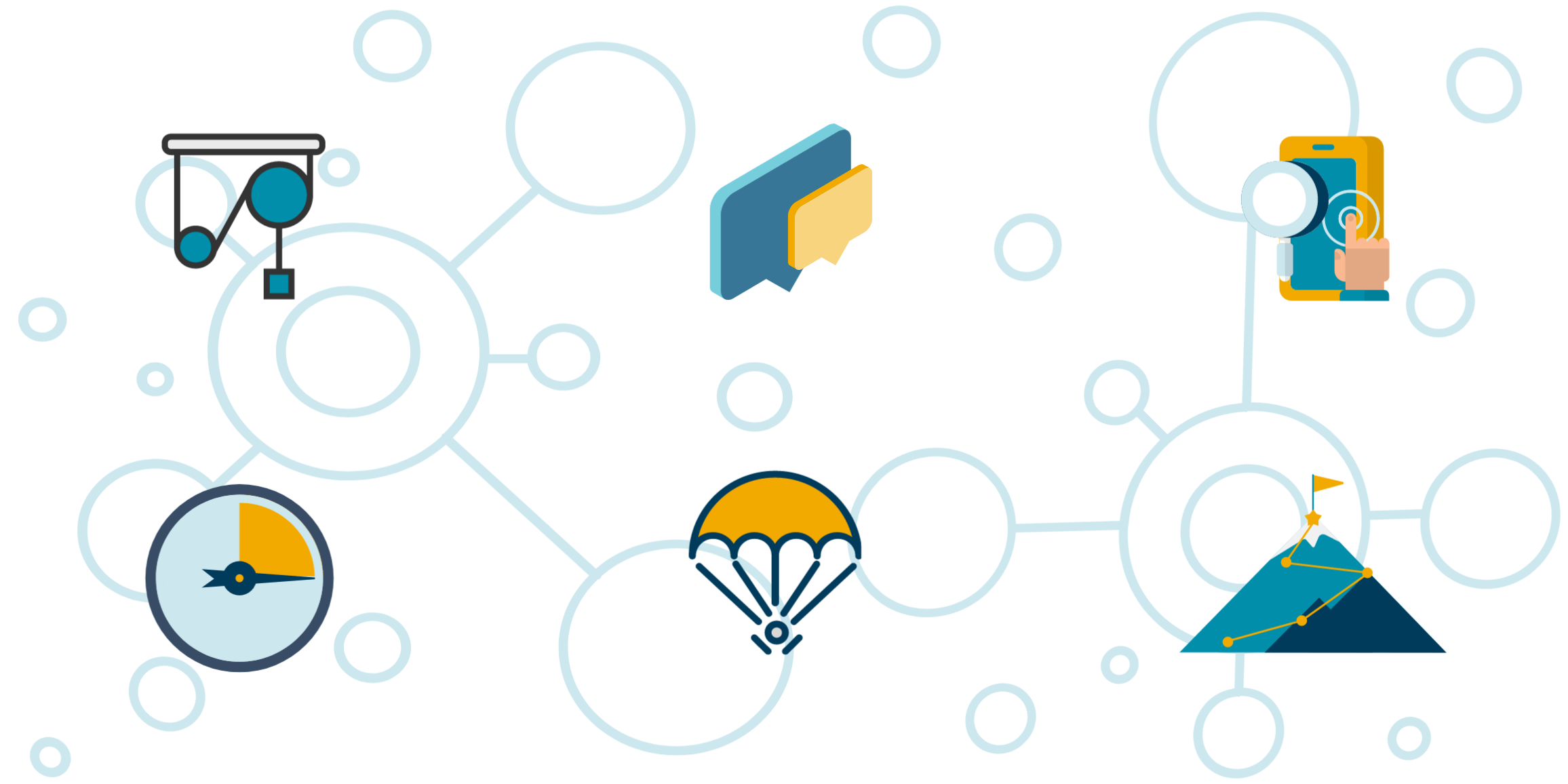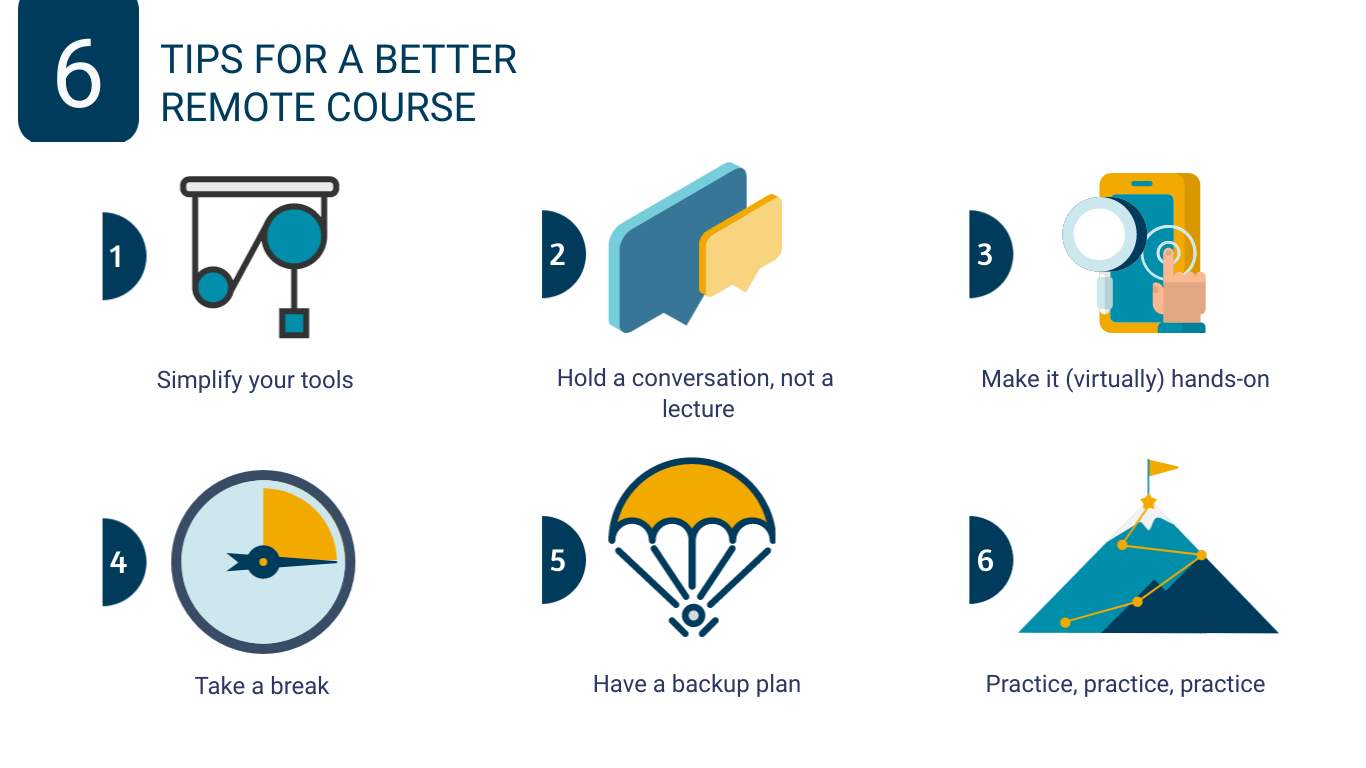3. Make it (virtually) hands-on
When designing an online course, it’s easy to think traditional classroom activities or engagement strategies won’t work. However, with the right tools, simple practices like group discussions are just as effective with remote course delivery.
Start with focusing on the “why” behind every activity. Once you’ve identified the learning objective you hope to achieve, then choose the tools that will help students achieve it. From videos and animation to virtual whiteboards, leverage the most effective remote tools and concepts out there to help engage your learners and make the learning stick.
4. Take a break
When teaching in-person, full-day sessions are not unusual. However, remote learning requires a different approach. After roughly three hours, your learners’ retention of the material will begin to decrease significantly.
Online courses should be between 90 minutes and two hours. Keep in mind that learners need a break every 45 to 60 minutes. Take this opportunity to modularize your courses, teaching in smaller chunks so that people can take what they’ve learned, try it out, and return to the next class prepared to go deeper.
5. Have a back-up plan
When technology is involved, if it can go wrong, it will go wrong. Make sure you have a plan for when it does. Approaching course design with an agile mindset allows you to embrace uncertainty and be flexible to meet learners' needs in the moment.
For example, discuss with your co-trainer ahead of time a plan for internet outages. Should an outage happen, you’ll know whether you will try to move to a different location or provider, have your co-trainer continue the class, or reschedule your class. It’s also important to have a plan for how you’ll communicate these changes with your learners.
6. Practice, practice, practice
Remote course delivery is most effective when you understand the technologies, master the art of smooth transitions, and maintain an energy of collaboration and engagement. Together, these skills shield your learners from the world of distractions, right on their screen.
Whether you’ve spent a year or several years perfecting your in-person training skills, effective remote course delivery requires a strikingly different approach and lots of practice. At ICAgile, we believe in the power of remote learning and we’re here to help instructors deliver top-quality courses from anywhere in the world.
Editors note: This article was originally published March 25, 2021 on atd.org/blog.




